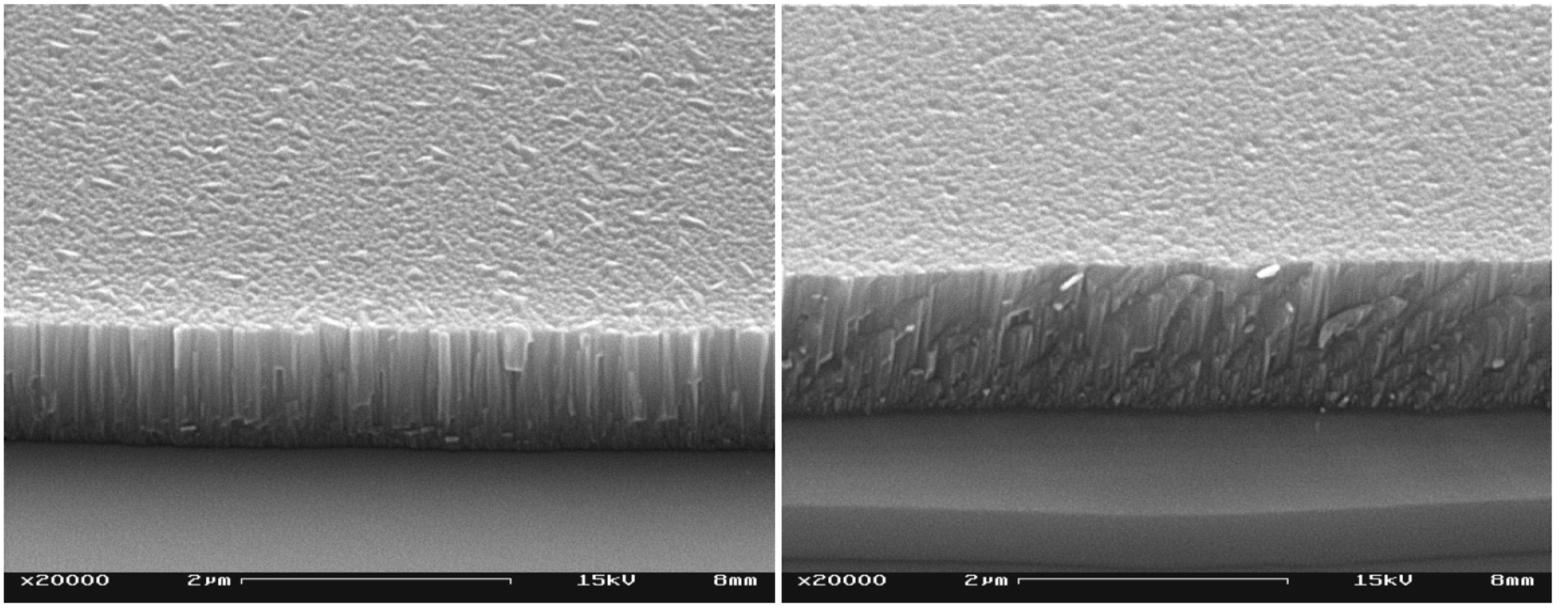
Year
2006Abstract
Aluminium nitride is a promising coating material for many applications, due to its good physical and mechanical properties. Hard transparent Aluminium nitride thin films have been deposited by bipolar reactive pulsed magnetron sputtering (PMS). With its inherent advantages of energetic particle bombardment of the growing film and minimal arcing tendency even in dielectric layer deposition processes, the technology allows deposition of high quality films. Layers have been deposited with a rate of 53 nm/min on moving substrates in a batch coating device. Characterization of the process was performed in both a fixed flow mode and a current controlled mode at a working pressure of 0.2 Pa. Based on the characteristic curves obtained; different working points have been selected for the deposition of 1.5 μm thick AlN layers on Si-Wafers and floatglass. For film deposition, the reactive sputter process was operated with a closed-loop feedback control to maintain stable operating conditions during the coating process. The Influence of varying the working points on the mechanical and the physical properties of the layers have been studied. All films are stoichiometric and highly transparent. Mechanical properties have been determined on coated Si-Wafers. The films exhibit hardness up to 26 GPa and elastic modulus up to 336 GPa and these properties do not vary significantly with varying working point. In contrast, the residual stress can be tailored from +0.5 GPa tensile to –0.5 GPa compressive stress by appropriate choice of deposition conditions.







